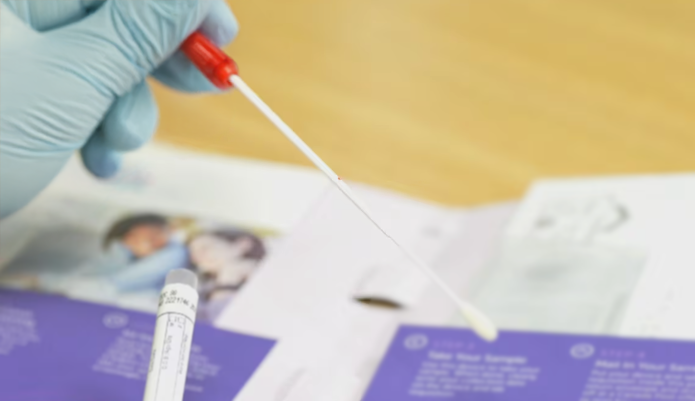Welcome back to our ongoing series on the use of primary HPV testing in cervical cancer screening. In this installment, we aim to shed light on the issues of false negatives and false positives that can occur with primary HPV testing.
False Negative HPV Results
The advent of HPV tests has undoubtedly transformed cervical cancer screening, significantly boosting sensitivity and reducing the occurrence of false negatives compared to traditional cytology-based methods. However, it’s crucial to recognize that HPV testing, while highly effective, is not foolproof, and not all cervical cancers can be detected through this method.
One notable concern arises from the fact that approximately 9-10% of invasive cervical cancers test negative for HPV. Moreover, in the case of high-grade squamous intraepithelial lesions (HSIL), 8.3-14% may yield negative HPV results when current HPV tests are employed. As HPV testing becomes increasingly prevalent, it’s imperative to keep a watchful eye on the potential rise in false-negative results. We must ensure that these critical diagnoses are not missed.
False-negative results can have multiple underlying causes. They are:
- Non-HPV-related Cancer: A portion of cervical cancers, particularly adenocarcinoma (ADC), are known to exhibit varying rates of HPV negativity, ranging from 15% to 48%, depending on the ADC subtype. Detecting these cases becomes challenging when relying solely on HPV testing. Additionally, there’s the issue of misclassifying non-HPV-related endometrial adenocarcinoma as cervical cancer, further complicating the landscape.
- Single HPV Infections: Some cervical cancer cases develop from single infections with HPV types classified as probably or possibly carcinogenic by the World Health Organization (WHO). These single-infected cases might go undetected by current HPV screenings, which only include the 14 hrHPV subtypes.
- ‘Hit and Run’ Hypothesis: In some cases, HPV infection initiates cancer development but is no longer detectable once the cancer has progressed and other mutations have accumulated.
- Sample Collection and Laboratory Errors: Errors in sample collection and laboratory processes can lead to false-negative results. Improper sample collection could result in degraded and/or insufficient HPV DNA material. With the emergence of self-sampling methods for HPV assays, concerns have arisen about whether the rate of self-collected samples deemed unsatisfactory for evaluation will be acceptable. Laboratory errors may also arise from inadequate laboratory procedures, poorly trained personnel or a lack of proper validation and rigorous quality assurance protocols.
Implications: Recognizing Limitations
Achieving 100% sensitivity in screening tests is an unattainable goal. It is vital for policymakers and healthcare providers to acknowledge this limitation. Patients should be informed that while participation in screening significantly reduces the risk of cervical cancer, it does not eliminate the risk entirely. Minimizing false negatives involves using certified and validated screening methods, extensive training for personnel and stringent quality assurance protocols.
False Positives: Pitfalls of Overdiagnosis
Balancing sensitivity and specificity in HPV testing is crucial. Prioritizing sensitivity can lead to an increased number of false positives, which can have significant repercussions for patients. In an effort to catch all cases, tests may label tens or hundreds of thousands of screened patients as at-risk for cancer when, in reality, they are not: a one-time positive HPV result does not necessarily indicate a high risk of developing cervical cancer.
In the context of cervical cancer screening, a “false positive” doesn’t mean that HPV is absent. Instead, it implies that the detected HPV infection is unlikely to lead to cancer. Several factors contribute to these false positives:
- Testing for Non-High-Risk HPV Types: Some tests may detect non-high-risk HPV types, leading to false positives.
- Inclusion of Marginally Carcinogenic HPV Types: Certain diagnostic tests include marginally carcinogenic HPV types, like HPV66, which can result in unnecessary positive results. Correcting this issue is challenging due to economic incentives.
- Cross-Reactivity: Cross-reactivity in HPV assays can lead to false positives for non-high-risk HPV types.
In resource-limited settings where triage tests are not feasible, the practice of treating all HPV-positive cases can lead to overtreatment. Most HPV infections, even the more carcinogenic types, typically resolve without progressing to cancer. Initiating treatment for all positive HPV results can thus expose patients to unnecessary procedures and their associated risks.
Conclusion
While HPV-based screening is currently the most effective approach, it is crucial to understand its limitations and the factors affecting its accuracy. Thorough research and methodological rigor are needed to address these challenges effectively. Balancing sensitivity and specificity, while being aware of the potential for false results, is key to ensuring optimal care and treatment.
Stay tuned for our upcoming final installment in this series where we will discuss the advent of self-sampling for HPV testing in cervical cancer screening.

